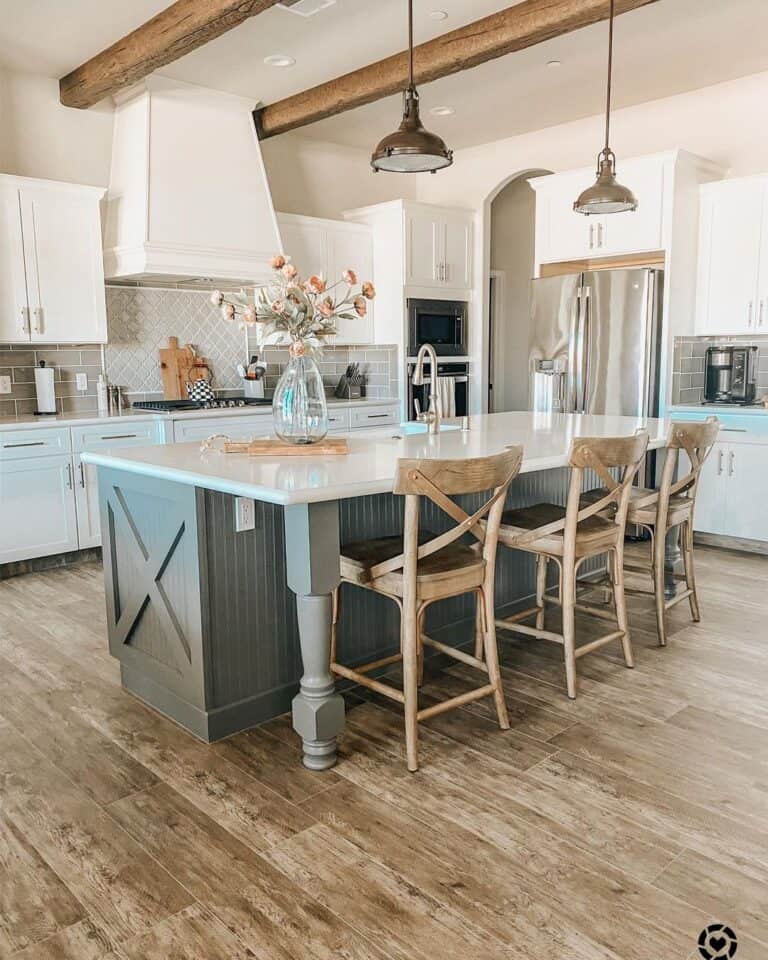Necessary Aspects to Think About When Choosing Legs For Kitchen Island
Selecting the proper legs for a kitchen island includes a careful evaluation of numerous factors that can substantially influence both performance and visual appeal. As we check out these components, it becomes clear that each decision can have far-reaching effects for the overall kitchen experience.
Material Options
When picking legs for a kitchen island, comprehending the different material options is necessary for achieving both aesthetic allure and architectural integrity (Legs For Kitchen Island). The choice of material substantially affects not just the resilience of the island however additionally its overall design and functionality
Steel legs, commonly made from stainless steel or functioned iron, add a contemporary and industrial feeling while making certain longevity and security. These products are resistant to wear and can support substantial weight, making them ideal for bigger islands.
An additional choice is engineered materials, like MDF or plywood, which can be more cost-efficient while still supplying a variety of surfaces. They may not provide the very same level of stability as strong wood or steel. Legs For Kitchen Island. Last but not least, materials such as acrylic or glass can create a modern look, though they may call for extra assistance to make sure stability.
Eventually, the selection of product for kitchen area island legs should straighten with the preferred functionality and the total theme of the cooking area.
Design and Style

When considering design, the form and coating of the legs are critical. Tapered legs can offer a sense of lightness and elegance, while thicker, much more robust legs can convey strength and security. In addition, the coating-- be it repainted, discolored, or natural-- ought to complement the cabinetry and countertop products to develop a unified appearance.
Additionally, the style of the legs can also reflect individual preference. Custom-made or ornamental legs, such as those featuring intricate makings or special geometric shapes, can serve as focal factors, including character and personality to the cooking area. Inevitably, the ideal choice will not just improve functionality yet likewise elevate the visual charm, making the kitchen island a standout attribute of the home.
Elevation Considerations
Picking the proper height for kitchen island legs is vital, as it directly influences both performance and comfort. The typical height for a kitchen island commonly ranges from 36 to 42 inches, straightening with typical countertop elevations. A 36-inch height is suitable for food preparation and food preparation, index enabling for comfy use cooking area home appliances and devices. Conversely, an elevation of 42 inches is view it frequently favored for islands intended for bar seats, accommodating taller feceses and offering a laid-back eating experience.

It is likewise necessary to represent users' choices and elevations. Customizing the elevation can make sure a comfortable experience for all relative, making the kitchen island a much more pleasurable and useful room.
Weight Support
Ensuring appropriate weight support for cooking area island legs is important for both safety and security and performance. The cooking area island typically serves several purposes, consisting of cooking, dining, and added storage, demanding a robust support structure. When picking legs, it is vital to consider the total weight capacity needed based upon the island's intended usage and the products that will be put on it.
The selection of material for the legs plays a substantial role in their weight-bearing abilities. Strong timber, metal, and durable compounds generally offer premium strength compared to lighter products. In addition, the design of the legs-- whether they are directly, tapered, or have a pedestal kind-- can affect their ability to distribute weight successfully throughout the framework.
Furthermore, the leg placement must be purposefully planned to enhance stability. Legs positioned at the edges or with a bigger base can much better support heavier loads. Always seek advice from the supplier's specifications concerning tons limitations to make sure that the legs can maintain the desired weight without endangering safety. In summary, selecting kitchen island legs with adequate weight support is important for producing a risk-free and practical culinary area.
Installation and Upkeep
Appropriate installation and upkeep of kitchen island legs are critical for making sure longevity and security. This frequently entails protecting the legs to the island base making use of proper bolts, guaranteeing that the legs are degree and lined up.
As soon as installed, normal maintenance is needed to preserve the stability and look of the legs - Legs For Kitchen Island. For wooden legs, routine cleansing with a damp cloth and application of appropriate timber polish can prevent wetness damages and preserve their surface. Steel legs might need a mild cleansing solution to remove oil and gunk, complied with by a dry cloth to avoid corrosion development
Furthermore, evaluate the legs regularly for indicators of wear or damages, such as cracks or loosened joints. Tightening up screws or screws as needed can also prolong the life expectancy of the legs. By sticking to these installment and upkeep techniques, home owners can ensure that their kitchen island remains durable and visually appealing for many years to find.
Final Thought

Visual comprehensibility is paramount in choosing the style and style of legs for a cooking area island, as these components significantly influence the general atmosphere of the room. Conical legs can give a feeling of lightness and elegance, while thicker, much more robust legs can communicate stamina and security.Selecting the proper elevation for cooking area island legs is critical, as it straight influences both capability and convenience. In recap, picking cooking area island legs with ample weight assistance is crucial for developing a useful and secure cooking area.
In final thought, choosing legs for a kitchen island necessitates careful factor to consider of numerous variables, consisting of material options, style, elevation, weight assistance, and setup.